Inbox and Environment News: Issue 396
March 10 - 16, 2019: Issue 396
School Strikers Welcome The Australian Education Union’s Support For Our #ClimateStrike
Friday 8th March: Media Release - School Strike 4 Climate, AustraliaThe school strikers for climate action welcome the Australian Education Union’s (AEU) support of our March 15 #ClimateStrike
In a statement issued today, Federal President Correna Haythorpe from The Australian Education Union, who represent 190,000 education workers, said:
“The AEU supports the democratic right of students to take direct action, giving voice to their real concerns about the impacts of climate change, and protesting the inaction by the federal government.”
“We commend the actions of students who participated in the climate strike in November 2018 to build pressure on the Morrison government to enact laws and policy that would place Australia at the international forefront on proper action to tackle climate change.”
“The AEU stands in solidarity with students and will work with education departments to ensure that students who wish to participate in the student strike planned for 15 March 2019 are afforded their democratic rights and can do so safely.” Ms Haythorpe said.
The Australian Education Union joins over 15 unions who have endorsed the strike so far, including the National Union of Workers, the Community and Public Sector Union, the Australian Services Union, United Voice, the National Tertiary Education Union, the General & Construction Division of the Construction Forestry, Maritime, Mining and Energy Union (Vic/Tas), the Australian Nurses and Midwives Federation (Vic/Tas), Education International, a global federation of unions representing 30 million educators worldwide, Public Services International representing 20 million workers worldwide, and more.
Responding to the AEU’s statement of support, Western Sydney school striker Adrian Wildhaber said:
“It’s wonderful that teachers and education bodies like the Australian Education Union are supporting our school strike movement. Support like this helps push our movement forward, igniting further momentum to fight for urgent climate action.
"The widespread support we are receiving shows just how deeply concerned people are about climate change. Climate change is already shaping up to be the number one issue in the 2019 Federal Election. We need politicians to do what it takes to keep fossil fuels in the ground and move Australia to 100% renewable energy. Our future is at stake if they don’t.”
On March 15, tens of thousands of students will strike from school to demand urgent climate action in almost 50 locations across Australia and over 70 countries worldwide.
Australian strikes are listed here (Sydney @ Town Hall at 12 Noon)
School strikers are calling on all politicians to treat climate change as a crisis and take urgent action to: - #StopAdani
- Stop all new fossil fuel projects and
- Commit to 100% renewable energy by 2030.
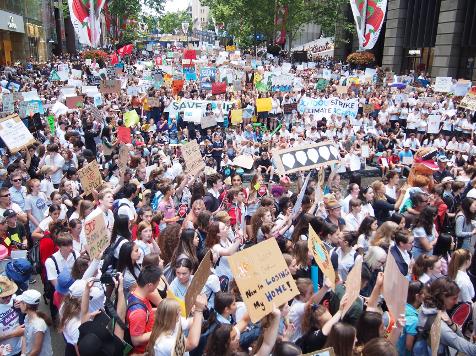
“The AEU supports the democratic right of students to take direct action, giving voice to their real concerns about the impacts of climate change, and protesting the inaction by the federal government.”“We commend the actions of students who participated in the climate strike in November 2018 to build pressure on the Morrison government to enact laws and policy that would place Australia at the international forefront on proper action to tackle climate change.”“The AEU stands in solidarity with students and will work with education departments to ensure that students who wish to participate in the student strike planned for 15 March 2019 are afforded their democratic rights and can do so safely.” Ms Haythorpe said.
“It’s wonderful that teachers and education bodies like the Australian Education Union are supporting our school strike movement. Support like this helps push our movement forward, igniting further momentum to fight for urgent climate action."The widespread support we are receiving shows just how deeply concerned people are about climate change. Climate change is already shaping up to be the number one issue in the 2019 Federal Election. We need politicians to do what it takes to keep fossil fuels in the ground and move Australia to 100% renewable energy. Our future is at stake if they don’t.”
- #StopAdani
- Stop all new fossil fuel projects and
- Commit to 100% renewable energy by 2030.

Liberal And Labor Must Rule Out New Hunter Valley Coal Power Plant Proposals
March 7th, 2019: Nature Conservation CouncilThe Nature Conservation Council calls on all parties to use state planning powers to block two 1000MW coal-fired power stations proposed for former Hunter Economic Zone near Kurri Kurri.
The Guardian reported today that Parramatta businessman Frank Cavasinni and Chinese investors were planning to lodge an application to build the facilities. [1]
“Ms Berejiklian and Mr Daley must both rule out approving any new coal fired power stations in NSW,” Nature Conservation Council CEO Kate Smolski said.
“If a new coal power plant was built it would blow the government’s target of making NSW carbon neutral by 2050.
“While the state is gripped by drought and people are crying out for leadership, the Coalition still lacks a plan to slash our emissions even after eight years in power.
“The ALP has unveiled ambitious plans to ramp up renewables, but the Coalition still has not stated how it plans to transform our electricity from coal to clean energy.
“The way Ms Berejiklian and Mr Daley respond to this latest threat will be a test of their commitment to a forward-looking climate and energy policy.”
Recent polling found 96% of people want renewables to be our main source of energy and more than 69% think governments should plan for the orderly closure of coal-fired power stations and their replacement with clean energy. [2]
REFERENCES
[1] 7-3-19 The Guardian - https://www.theguardian.com/australia-news/2019/mar/06/deal-huge-coal-fired-power-plant-hunter-hong-kong?CMP=Share_AndroidApp_Slack
[2] Climate of the Nation 2017: Australian attitudes on climate change
Thousands Of Ducks Set To Be Killed
By BirdLife AustraliaAll native birds are protected equally, it’s just that some are protected more equally than others. There are stiff penalties for killing native birds in all of Australia’s states, yet when the calendar flicks over to March, the State Governments of Victoria, Tasmania and South Australia decide it’s suddenly okay to kill native birds after all, just as long as they are ducks.
Somehow, ducks are considered to be different from all our other native birds and don’t require protection from people with guns for several weeks between March and June every year. Even when long-running surveys show that waterfowl numbers are at their lowest for decades, shotguns are still allowed to spray across the wetlands. And even when the drought causes surviving waterbirds to crowd into great concentrations on the few refuge wetlands with water, the hunters are still allowed to shoot them. And despite news of massacres of flocks of Freckled Ducks surfacing every so often, still they blast away.
Just how many ducks are shot each year is a surprise. Although figures from Tasmania and South Australia are unavailable at the moment, the number of waterfowl shot during last year’s open season in Victoria have been published, and they are shocking, to say the least.
According to official estimates by the Victorian Government’s Game Management Authority (which oversees the annual duck shooting season), nearly 400,000 ducks were ‘harvested’ in Victoria during the 2018 duck shooting season — 396,708, to be exact. That’s an astonishing number of native birds killed for no reason other than the enjoyment of a dwindling number of hunters. Add to that the number of native ducks shot across South Australia and Tasmania and the figure will be even more staggering.
This figure comprised nearly 133,000 Pacific Black Ducks, 123,000 Grey Teal and 89,000 Australian Wood Ducks, with the balance made up of thousands of Australasian Shovelers, Chestnut Teal, Hardheads, Australian Shelducks and Pink-eared Ducks, all killed over a period of just a few weeks. Given the current drought conditions and the historically low number of waterbirds in eastern Australia, how sustainable can this be? And yet the hunters complain about a season that is shortened ever so slightly, and slightly reduced bag limits.
With a vast majority of Australians opposing the idea of shooting ducks for fun, how long can this outdated blood-‘sport’ persist?
Premier Says ‘See The Outback Before It’s Gassed’
March 8th, 2019: Media Release - Lock the GateLock the Gate Alliance has condemned the move by Queensland Premier Annastacia Palaszczuk to sell out the bush one week, then try to sell it to the city the next.
Ms Palaszczuk this morning promoted Western Queensland’s Cobb & Co historical sites at Brisbane’s Radacliff Place as part of the Year of the Outback tourism campaign.
St George resident Leanne Brummell said it was unlikely many tourists from the city would want to visit the Cobb & Co sites if the coal seam gas industry was allowed to drill on top of them as planned.
“Armour Energy and Santos Shell JV want to further pierce the Surat region like a pin cushion with CSG wells - Surat hosts one of the most famous Cobb and Co sites on the Balonne River.
“What tourist is going to want to come and visit a gasfield?
“As it stands, there are gas wells within 30km of the Surat village, and much of the Western Downs has been pockmarked thanks to this invasive polluting industry.
“Armour energy’s closest approval is now 10km from Surat.
“The Premier also just last week announced the go ahead for the massive Arrow Energy project, which will further condemn the Western Downs to a death by a thousand cuts.
“While it’s great the Premier is encouraging city people to visit the bush, this campaign feels like a ‘see it before it’s gone forever’ push.”
Ms Brummell will join the knitting nannas for a protest outside Santos' head office at Santos Place, 32 Turbot St, Brisbane CBD, tomorrow (Friday) from 11am.
Human 'Footprint' On Antarctica Measured For First Time
March 4, 2019: University of TasmaniaBuildings alone cover more than 390,000 square metres of land while the visual footprint -- the areas from which human activity can be seen -- extends to more than 93,000 square kilometres.
The lead author of the study published in the journal Nature Sustainability, IMAS PhD student Shaun Brooks, said measuring the area impacted by humans was important for Antarctic conservation and environmental management.
"Although the 53 countries that have signed the Antarctic Treaty agreed to protect the Antarctic environment, until now there has been only limited data on the spatial extent of human activity on the continent," Mr Brooks said.
"Our research shows that human impacts are the greatest on land that is also the most environmentally sensitive -- ice free areas within a few kilometres of the coast.
"Ice-free land supports the continent's greatest diversity of flora and fauna, including iconic species such as Adelie penguins, and provides the most accessible areas for marine animals that breed on land.
"We found that 81 per cent of the buildings in the Antarctic are located within just 0.44 per cent of the land that is free of ice."
Mr Brooks said future increases in research activity and tourism were expected to put further human pressure on the continent in coming years.
"The data we have collected can be used to inform decision-making on Antarctic conservation and environmental management, as well as to track future impacts and changes.
"It may also serve to encourage greater coordination and sharing of facilities between nations and users accessing Antarctica, to help limit the human footprint.
"There is a growing tension between the increasing pressure for access to the continent and international commitments to protect the Antarctic environment.
"Hopefully our research can help to inform a sustainable balance between these competing imperatives," Mr Brooks said.
Shaun T. Brooks, Julia Jabour, John van den Hoff, Dana M. Bergstrom. Our footprint on Antarctica competes with nature for rare ice-free land. Nature Sustainability, 2019; DOI: 10.1038/s41893-019-0237-y
Smart Energy Conference & Exhibition 2019
Starts: 8:30am Tuesday, 2 April 2019Ends: 5:30pm Wednesday, 3 April 2019Location: International Convention Centre Sydney14 Darling Drive, Darling Harbour, New South Wales 2000Australia
The Smart Energy Conference and Exhibition is one of Australia’s biggest solar, storage and smart energy conference and exhibition.
Powered by the Smart Energy Council – incorporating the Australian Solar Council and Energy Storage Council, this is our 57th annual FREE-TO-ATTEND conference and exhibition.
TOP REASONS TO ATTEND- Over 6,000 delegates, 120 exhibitors and partners
- A showcase of the latest technology, demonstration of new business models and innovation
- Outstanding knowledge sharing and networking
- 3 Conference and information sessions with over 100 presenters
- CPD points for installers
- Over 6,000 delegates, 120 exhibitors and partners
- A showcase of the latest technology, demonstration of new business models and innovation
- Outstanding knowledge sharing and networking
- 3 Conference and information sessions with over 100 presenters
- CPD points for installers
Destruction Of Koala Habitat Now Widespread In NSW
March 1st, 2019: Nature Conservation CouncilDestruction of koala habitat has nearly doubled across three regions of NSW since the axing of the state’s Native Vegetation Act in August 2017, a new report has shown.
A study by WWF-Australia and Nature Conservation Council found more than 3,000 ha of koala habitat was destroyed in the Central West, Hunter and North West regions in the 12 months following the repeal of strong deforestation controls.
KEY FINDINGS- Bulldozing of native bushland nearly doubled in North West, Central West and Hunter regions in 2017-18.
- Deforestation rates increased 2.5x in the Central West, 2.3x in the Hunter Region and 1.6x in the North West.
- 3,079 ha of koala habitat was bulldozed in these regions in 2017-18, almost double the 1,600 ha destroyed in 2016-17.
Nature Conservation Council CEO Kate Smolski said: “The NSW Government is responsible for opening the floodgates to the destruction of koala forests and woodlands on a scale we have not seen for more than 20 years.
“More than 61 football fields of koala forest were wiped off the map every week in these regions. We could only guess the total losses across the whole of the state.
“This report confirms the devastating spike in deforestation we detected in the Collarenebri-Moree region last year was just the tip of the iceberg and is now widespread. The NSW Government must ban the clearing of koala habitat and other sensitive natural areas as a matter of urgency.”
WWF-Australia conservationist Stuart Blanch said: “The destruction of koala habitat is accelerating in NSW, where there are likely less than 20,000 koalas left in the wild.
“At the current rate, they are on track to be extinct in the state by as early as 2050. We have to stop this excessive tree-clearing if we want to keep koalas alive in the wild for future generations.
“The clearing destroyed habitat for 71 threatened species, including koalas. The forests that were bulldozed meant there are now fewer trees to make rain, cool the weather and store carbon.
“We are calling in on the NSW Government to urgently strengthen the laws to ensure koalas and other threatened native animals are given the protections they need.”
Reports
New South Wales Deforestation Data Analysis: Three Case Studies 2016-2018, (2019) WWF-Australia and NSW Nature Conservation Council.
Bulldozing of bushland nearly trebles around Moree and Collarenebri after safeguards repealed in NSW, (2018) WWF-Australia and NSW Nature Conservation Council.
What can Australians do to help protect koalas?
WWF-Australia and the Nature Conservation Council have launched petitions calling all parties to take action to protect koalas in NSW for future generations.
WWF-Australia: www.wwf.org.au/savekoalas
- Bulldozing of native bushland nearly doubled in North West, Central West and Hunter regions in 2017-18.
- Deforestation rates increased 2.5x in the Central West, 2.3x in the Hunter Region and 1.6x in the North West.
- 3,079 ha of koala habitat was bulldozed in these regions in 2017-18, almost double the 1,600 ha destroyed in 2016-17.
Farmers Slam Minister Roberts’ Dodgy Special Rules For Gas Companies
March 8th, 2019: Media Release - Lock the GateFarmers from North West NSW have slammed the actions of Planning Minister Anthony Roberts after he flaunted established planning processes in favour of a pipeline company, which could carry gas from the Santos Narrabri CSG project.
The Hunter Queensland Gas Pipeline was approved over ten years ago but did not commence. In November the company applied for an extension for another five years, but the approval lapsed on February 11th this year without an extension being granted.
However, on the very last day before the caretaker periodcommenced ahead of the NSW election, Minister Roberts made a new regulation which appears specifically designed to extend the lapsed deadline on the pipeline by 12 months.
Scott McCalman, a farmer near Mullaley said, “Anthony Roberts has flaunted the proper NSW planning process, changing the rules for the convenience of the CSG industry and leaving farmers and landholders in agonising limbo.
“Roberts has abused his power and shown contempt for the public and the farmers of North West NSW by backdating this extension after it had already lapsed."
Last year, over one hundred objections were lodged against the proposal to extend the approval.
Submitters argued that the ten year deadline for approved projects was important to provide certainty to local communities and currency to the planning process.
“The effect of this dodgy extension for a CSG pipeline is to extend uncertainty for landholders along the pipeline route, bending and making new rules for the benefit of the proponent, the Hunter Gas Pipeline Pty Ltd,” Mr McCalman said.
“This pipeline has been directly linked to the proposed Santos Narrabri CSG project that farmers in North West NSW have fought tooth and nail against for nine years.
“Coal seam gas puts our precious groundwater at risk and to see the NSW Government bending the rules for a gas company when we’re at our wits end with the threat of CSG is a real kick in the teeth."
The new Regulation is specifically for “transitional Part 3A projects that have been designated as state significant infrastructure” as the Hunter Gas pipeline is, and specifically contains a retrospective provision applying the extension to development approvals that have already lapsed.
City Of Hobart First In Australia To Ban Plastics
March 5th, 2019The City of Hobart (Council) is taking the lead to reduce the human impact on our environment by banning single-use plastics within our Local Government Area.
What does this mean?Retailers will be advised to change their current single-use plastic containers which are smaller than one litre in volume or an area equivalent to A4 (210 mm by 297 mm) in size, to more environmentally friendly options.
This change will only affect packaging that is provided at the point of sale, such as when food is prepared onsite then packaged for takeaway. Prepackaged food (that is food that is already packaged like chocolate bars and soft drinks) will not be affected. Pre-packaged fruit and vegetables from the supermarket, will also not be affected.
More information: hobartcity.com.au/singleuseplastics

Kepco’s Bylong Mine Can’t Escape Climate Reality Any Longer
March 8th, 2019: Media Release - Lock the GateMining company KEPCO’s new submission to the Independent Planning Commission on its proposed Bylong Valley coal project is recognition the Rocky Hill judgement changed the way the IPC should consider new coal mines in New South Wales, according to Lock the Gate Alliance. 1.
KEPCO has submitted new information to the Commission this week confirming that “Scope 3” (downstream burning) emissions from the Bylong proposal, which would destroy farmland in the picturesque Bylong Valley, will be 197.4 Mt - more than five times the Scope 3 emissions the Rocky Hill coal mine would have produced.
“Rocky Hill was in part rejected by the Land and Environment Court on the grounds it would contribute to an increase in greenhouse gas emissions and would not be consistent with efforts to achieve the Paris Agreement goals of limiting global warming to below 2 degrees or 1.5 degrees,” Lock the Gate spokesperson Georgina Woods said.
"Given the downstream emissions from Bylong coal mine would be five times that of the Rocky Hill mine, refusing the Bylong coal mine project will make a meaningful contribution to remaining within the carbon budget for achieving the long term temperature goals of the Paris Climate Agreement and that's what the Independent Planning Commission needs to do.
"Australians are already suffering the impacts of climate change and there is so little time left to prevent the problem escalating beyond our control.
“The public expects all responsible agencies to use the powers available to them to act.
"The Independent Planning Commission cannot in good conscience let the Bylong Valley be opened up to coal mining. It's a coal mine in the wrong place and at the wrong time.
"Meeting the Paris climate agreement goals means both Australia and the Republic of Korea will need to phase out coal use in the next decade.
"We need to be honest about the incompatibility of continued coal exports from New South Wales and our shared goal to keep global warming below 1.5 degrees, and we need a ten year plan to help the Hunter region adjust to a necessary decline in coal use."
KEPCO’s greenhouse gas submission can be found here: https://www.ipcn.nsw.gov.au/resources/pac/media/files/pac/projects/2018/10/bylong-coal-project/additional-information-from-kepco/bylong-coal-project--scope-3-ghg-emissions.pdf
1. Scope 3 emissions from Rocky Hill would have been 37.8Mt over the projected life of the proposed Rocky Hill mine (at [515] of the judgment in Gloucester Resources v Minister for Planning).
EPA Fines AGL Macquarie $30,000 After Diesel Spill
March 5th, 2019: EPA Media ReleaseThe NSW Environment Protection Authority has fined AGL Macquarie Pty Ltd (AGL) $30,000 following a diesel spill from Bayswater Power Station in to Tinkers Creek in 2018.
EPA Director Hunter Karen Marler said two fines of $15,000 each and two official cautions were issued after diesel overflowed from an onsite storage tank, due to an alleged valve failure, despite alarms being sounded.
“It is believed that between 45,000 to 70,000 litres of diesel overflowed from the tank with a small amount of diesel making its way to Tinkers Creek,” Ms Marler said.
“The diesel was not contained by the tank’s bund due to the company’s failure to maintain the bund.
“The issue was amplified by the way the internal alarm system was managed. Multiple alarms masked the alert caused by the diesel overflow and led to a delayed response.”
Since the incident, AGL has addressed deficiencies with their alarm system.
The EPA acknowledges that AGL implemented measures to swiftly clean up the spill, including installing booms in Tinkers Creek and engaging suction truck contractors to clean up.
The NSW EPA encourage the community to report any concerns about environmental pollution to the EPA’s environment line on 131 555. The EPA takes all reports seriously and will investigate.
Penalty notices are one of several tools the EPA can use to achieve environmental compliance including formal warnings, official cautions, licence conditions, notices and directions and prosecutions. For more information about the EPA’s regulatory tools, see the EPA Compliance Policy at www.epa.nsw.gov.au/legislation/prosguid.htm
A Survey On Ticks And Wildlife In The Northern Beaches
The University of Sydney is conducting a study to better understand how residents and their pets are encountering ticks and wildlife in their backyards. We invite all Northern Beaches residents to participate in our survey.
Coastal bushland remnants and other green spaces across the Northern Beaches are home to a variety of native plants and animals. They also provide a place for residents to enjoy their favourite outdoor pastimes. Paralysis ticks (Ixodes holocyclus) are common in the Northern Beaches and feed on a wide range of animal hosts during their life cycle. Understanding the complex relationship between ticks and their host species is an essential part of our research. The information we gain will contribute to our growing knowledge of ticks and will guide future research efforts.
We aim to identify:- Areas where people are encountering ticks more than others (tick 'hotspots'),
- Backyard and landscape features that may influence tick presence, and
- Wildlife using backyards and how this might or might not influence tick occurrence
To meet these aims, it is important for you to provide a street address. If you would prefer not to, we ask that you provide your street name and nearest cross street. It is important for us to create a map of tick encounters to understand what landscape features might influence tick presence and where to target future research.
All identifying information will be removed from any data presentations.
The survey should only take approximately 10 minutes to complete and is voluntary.
If you have any questions about the project, please contact PhD candidate Casey Taylor on 02 9351 3189 or casey.taylor@sydney.edu.au. This project is being undertaken by the University of Sydney in association with Northern Beaches Council.
Your participation is greatly appreciated.
This research has been approved by the University of Sydney Human Ethics committee. (Approval no: 2018/157)
- Areas where people are encountering ticks more than others (tick 'hotspots'),
- Backyard and landscape features that may influence tick presence, and
- Wildlife using backyards and how this might or might not influence tick occurrence
Thirteen Mammal Extinctions Prevented By Havens, Study
Tuesday, March 5th, 2019Havens - islands and fenced conservation areas that are free of feral cats and foxes - have already prevented 13 mammal extinctions in Australia, and supported improved conservation for many other species.
A stocktake of where Australia’s havens are, what native mammal species are in them, and where future havens need to go to prevent further extinctions has been released by the Threatened Species Recovery Hub.
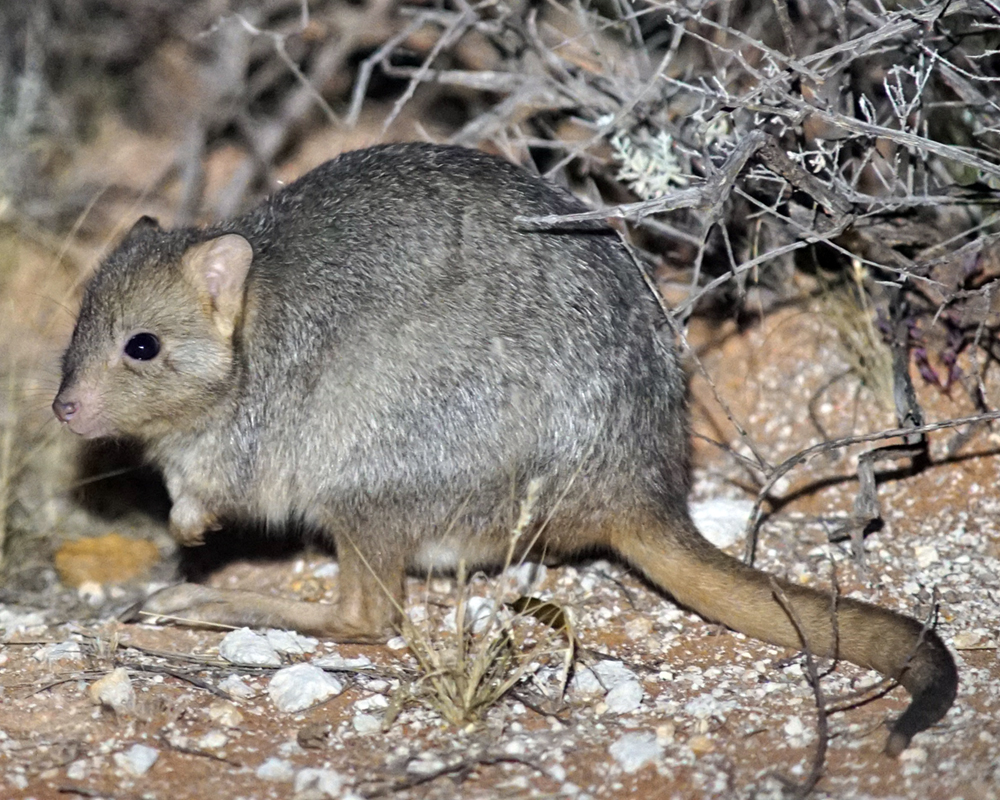
Boodies used to occur across two-thirds of Australia, but now only exist within havens. Image: Hugh McGregor / Arid Recovery
Professor Sarah Legge from the University of Queensland led the team of 28 scientists and conservation managers from universities, government conservation agencies and NGOs, who collaborated to undertake the audit. “Predation by feral cats and foxes is the main reason that Australia has the worst mammal extinction record over the last 250 years,’ said Prof Legge.
“At least 80 Australian islands are naturally cat- and fox-free havens which prevented extinctions.
“For example, the greater stick-nest rat became extinct on mainland Australia, but survived on the Franklin Islands off South Australia, which were not reached by foxes or cats.
“Since the 1980’s additional havens have been created in Australia by eradicating feral animals from islands or from within large fenced areas on the mainland.
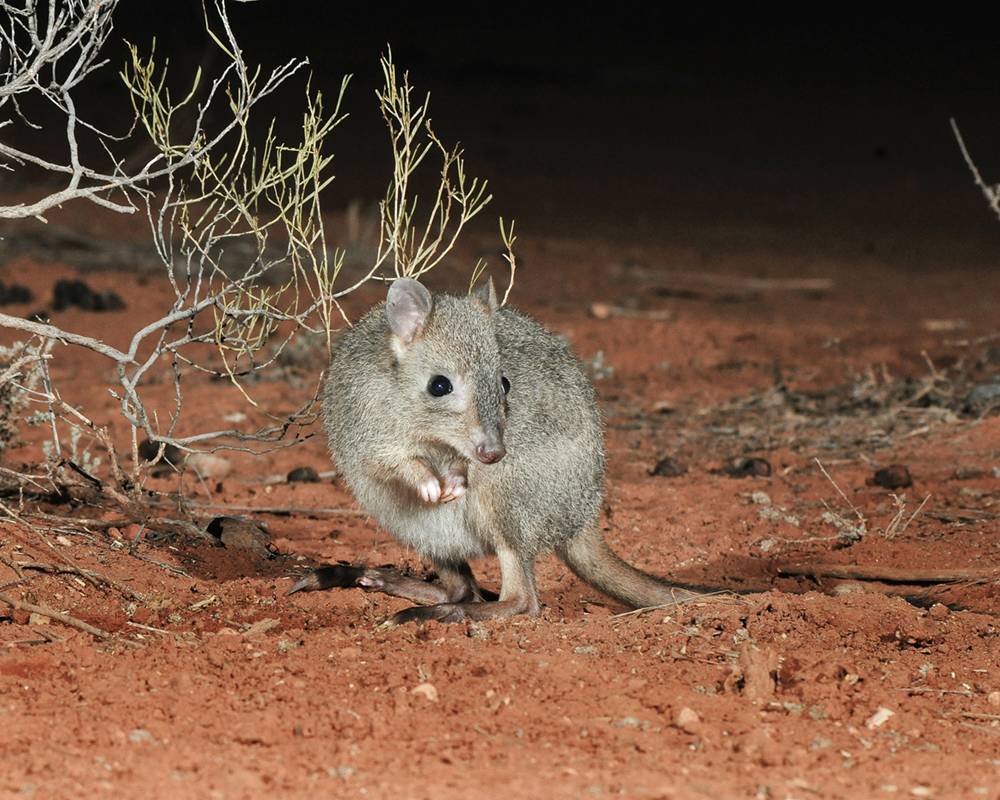
Woylies are found in seven fenced havens and on three island havens. Nationally woylies have declined from over 200,000 to less than 20,000 in the last 15 years. Predation by foxes and cats is considered the major cause. Once widespread across southern Australia, outside havens, there are now only three small wild populations in Western Australia remaining. Image: Australian Wildlife Conservancy
“Threatened animals have then been moved to these havens to put them out of reach of introduced predators.
“We now have 101 island havens covering 2152 km2 and 17 fenced havens covering 346 km2.
“A key finding of our review was that while more than half of the mammal species in Australia that are vulnerable to cats and foxes have the protection of being in a haven, 29 species are not yet in a single haven.”
According to Dr Jeremy Ringma, a lead researcher on the project, if we want to prevent future extinctions we need to get more strategic about where new havens are located, and which species go into them.
“The 11 most recently created havens have not added any new species to the haven network,” said Dr Ringma.
“Protection is also uneven. Woylies are now found in 10 havens, but the central rock rat, the Australian mammal at greatest risk of extinction in the next 20 years, is not protected in a single haven.
“Havens are being created by a diverse range of groups, including local and state governments, non-government groups and even private individuals.
“This diversity brings resilience to the growing network, but means that the network growth isn’t always optimal when viewed at a national scale.”
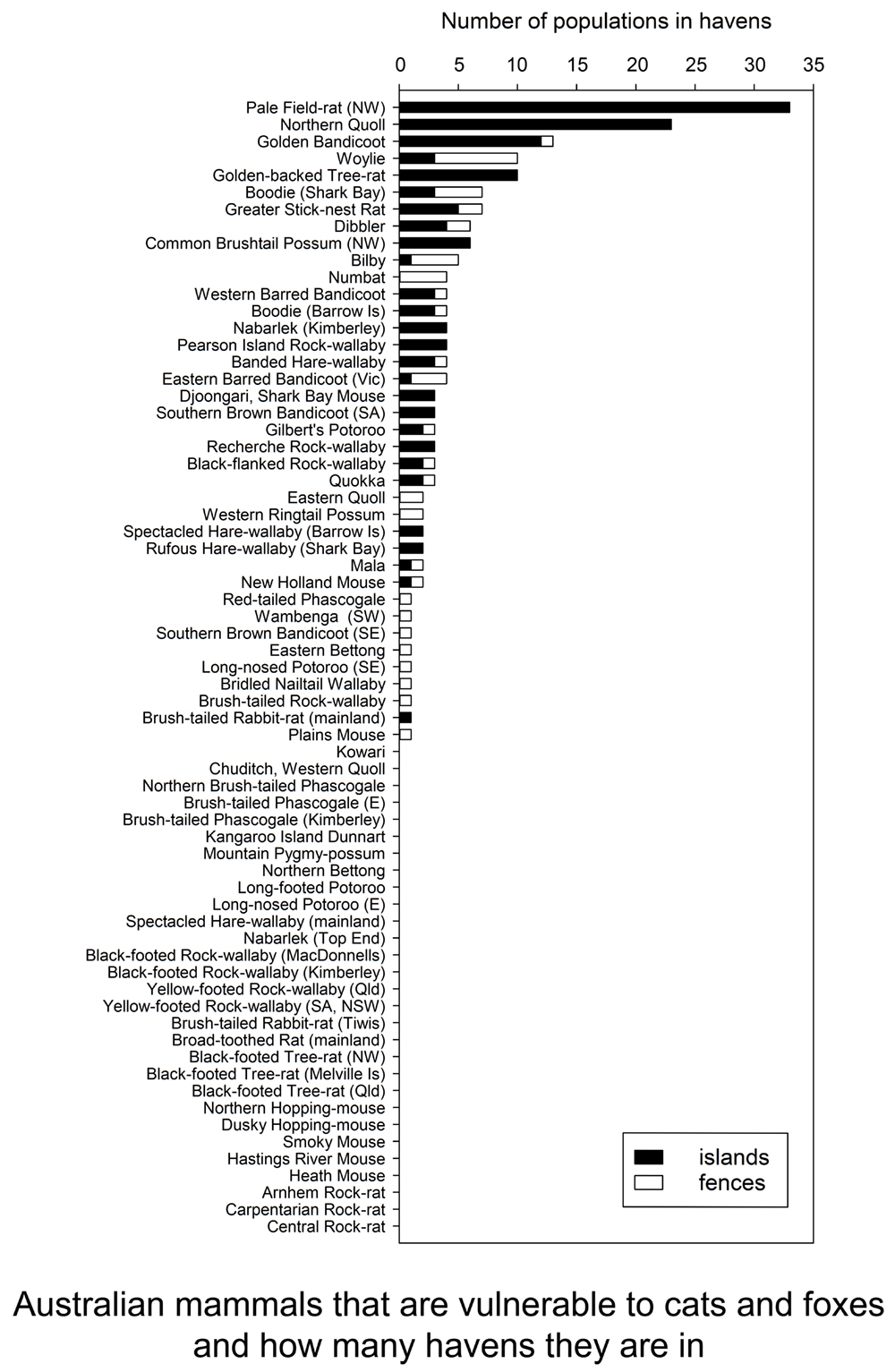
This graph shows the Australian mammals that are most vulnerable to foxes and cats and how many populations they have in havens. At the top, the pale field rat is found in over 30 havens. At the bottom, many species are found in no havens. Image: Threatened Species Recovery Hub
Dr Michael Bode from QUT said that to prevent future mammal extinctions we have to increase national collaboration and coordination and be more strategic about where new havens are created.
“We have identified where new havens need to go to get every threatened mammal species that is vulnerable to predation by cats and foxes into at least one haven,” said Dr Bode.
“If we put havens in the right places, we can achieve this with just 12 new havens.
“With 39 new havens, we could protect at least three populations of every threatened predator-susceptible native mammal species.”
Prof Legge concluded, “Cat- and fox-free havens cover tiny fractions of the original distributions of our native species.
“Longer term, we are still seeking ways of reducing fox and cat impacts across the landscape so that native mammals can be restored at bigger scales.
“Until then, cat- and fox-free havens will continue to be a critical tool in preventing extinctions.”
Dr Sally Box, Australia’s Threatened Species Commissioner, welcomed the research and said that understanding where safe havens are needed and identifying species that require protection will be vital for avoiding future extinctions.
“The Australian Government’s Threatened Species Strategy recognises the important role that islands and mainland safe havens play in the fight against extinction”, said Dr Box.
“This science is building a clearer picture of where best to create safe havens that deliver exceptional conservation benefits and protect a wide range of species.”
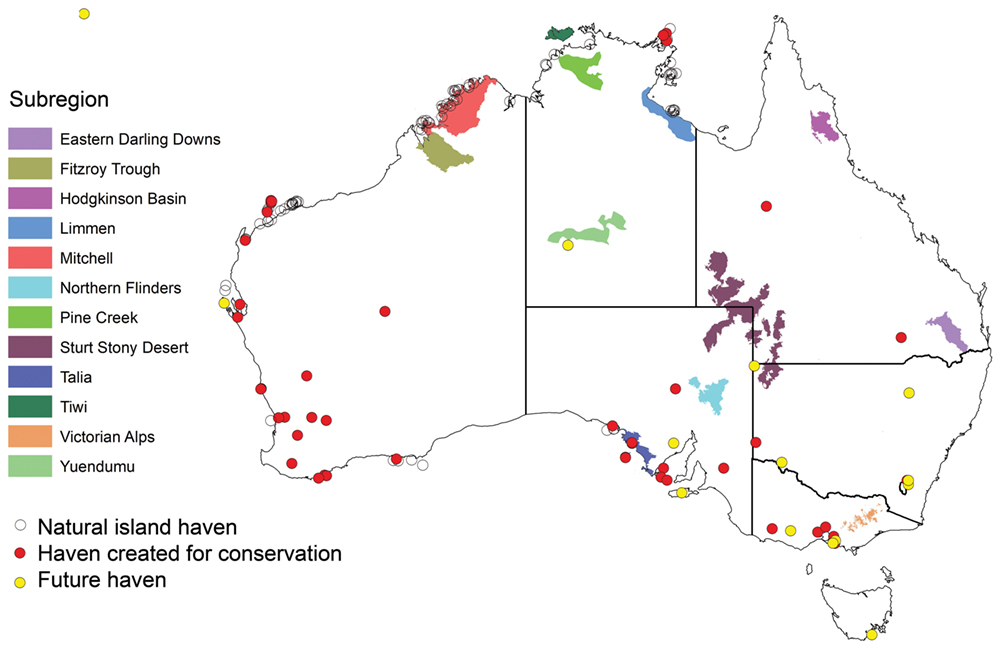
This map shows existing and planned havens as circles. In order to get every mammal that is vulnerable to cats and foxes into at least one haven, new havens should be prioritised for the 12 regions highlighted. Image: Threatened Species Recovery Hub
The research was undertaken by the Threatened Species Recovery Hub of the Australian Government’s National Environmental Science Program, in collaboration with government and non-government conservation agencies. It has been published in Wildlife Research, Nature Ecology and Evolution, and Conservation Letters.
The Hub is a collaboration of 10 leading Australian universities and the Australian Wildlife Conservancy to undertake research to support the recovery of Australia’s threatened species.
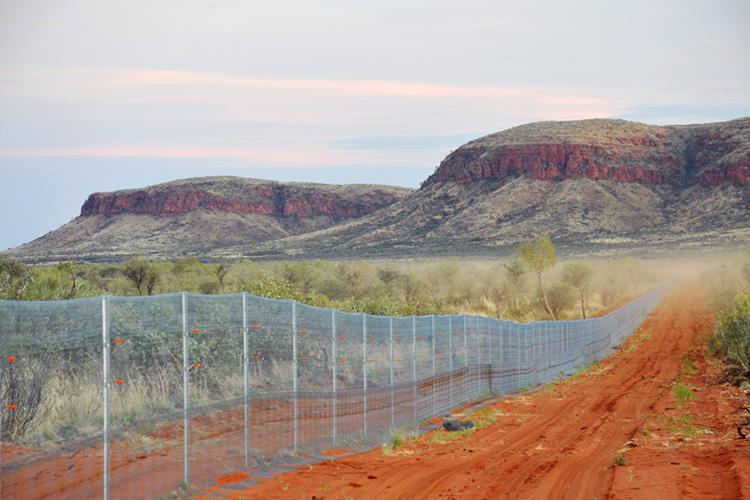
Above image: The first stage of Australian Wildlife Conservancy’s Newhaven Sanctuary nearing completion in Central Australia. Once all stages are complete, Newhaven Sanctuary will be a 650 square kilometres (65,000 hectares) cat- and fox-free haven for wildlife. Image: Australian Wildlife Conservancy





Stop Wasteful Water Infrastructure Subsidies For MDB – Study
March 6th, 2019: ANUA study from ANU has found billions of dollars are being wasted in water recovery subsidies to increase irrigation efficiency across the Murray-Darling Basin.
The Australian Government estimates $3.5 billion in subsidised on- and off-farm water infrastructure has achieved some 700 gigalitres per year increases to stream and river flows across the Murray-Darling Basin. A gigalitre (GL) equals a billion litres.
Based on a calculation from a range of estimates, the ANU study found the subsidised water infrastructure may have only delivered 70 GL/year increases to stream and river flows - 630 GL/year less than the Government's estimate.
Professor John Williams, one of the researchers, said 630 GL is more water than is in Sydney Harbour.
"Simply put, without independent and comprehensive water accounting, including what is happening to return flows and the effects of multi-billion dollar subsidies for irrigation infrastructure on stream flows, expect more fish kills, a continuing environmental crisis, and no peace in the Murray-Darling Basin," said Professor Williams from the Centre for Water Economics, Environment & Policy at ANU.
"The Government should halt any further subsidies until their water accounting adds up properly.
"These subsidies should not resume until it can be scientifically determined by how much they increase net stream and river flows, if at all, and at what cost. This requires comprehensive water accounting that was promised in 2004 by Australian governments, that still hasn't been delivered.
"Our study has undergone a comprehensive peer-review process and our findings marry up very well with those in the recent Royal Commission report and the Australian Academy of Science report - we are all singing from the same songbook."
Co-researcher Professor Quentin Grafton said their analysis showed the average cost of water recovery for infrastructure subsidies could be as much as $50 million per GL returned to the Murray-Darling Basin every year.
"We calculate that the actual average cost of increasing stream and river flows from subsidies to increase irrigation efficiency infrastructure in the Murray-Darling Basin could be 10 times more expensive than what is estimated by the Australian Government and 25 times more expensive per litre of water recovered than buying back water entitlements from willing sellers," Professor Grafton said.
"There is too much uncertainty about the actual effect on return flows from increases in irrigation efficiency in the Murray-Darling Basin," Professor Grafton said.
"We acknowledge that there is uncertainty in our own estimates as well, but it only strengthens the case for the long-promised, but never delivered, comprehensive water accounting system to be set up for the Murray-Darling Basin.
"When there is published evidence in peer-reviewed scientific journals of deterioration of key aspects of the ecology in the Basin, ongoing failures of water reform, and misguided policies that are not increasing stream flows, the Australian Government needs to sit up and pay attention and actually deliver what was promised in the Basin Plan.
"There is an urgent need, especially given the drought and the mismanagement of water demonstrated by the Menindee fish kill, to have a much better understanding of where water is, how it is being used, and how we can best recover water to ensure the long-term sustainability of communities, agriculture and the environment in the Basin. Without it, we are flying blind and will not deliver on the key objects of the Water Act."
The peer-review study is published in Australasian Journal of Water Resources.
Missing in action: possible effects of water recovery on stream and river flows in the Murray–Darling Basin, AustraliaJohn Williams & R. Quentin Grafton. Received 14 Jul 2018, Accepted 28 Jan 2019, Published online: 04 Mar 2019
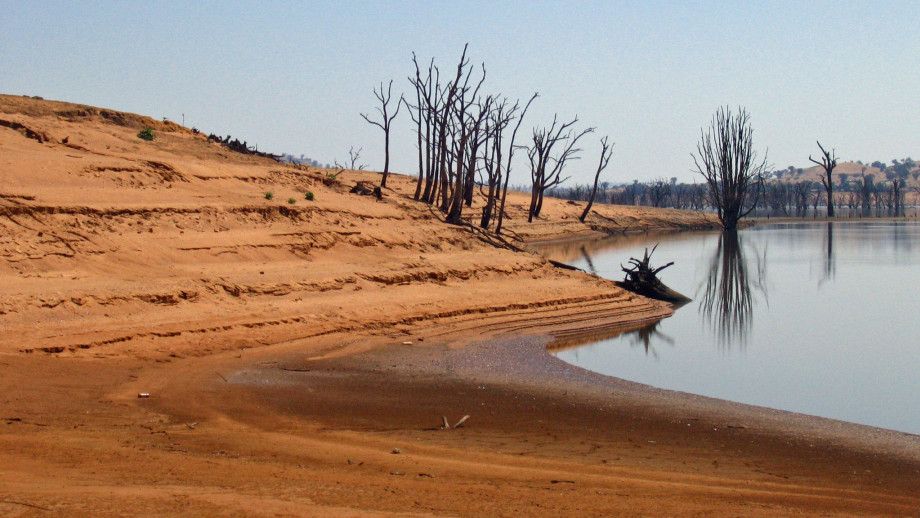
Hume Dam is a major dam across the Murray River - photo by Tim J Keegan - Flickr

Culling Noisy Miners Fails In NSW Trial, Study
Tuesday, March 5th, 2019The noisy miner is a threat to many other bird species, but culling them is no solution, according to new research by the Threatened Species Recovery Hub of the National Environmental Science Program.
Lead researcher Richard Beggs from the Australian National University said that noisy miner numbers are now greater than before Europeans arrived in Australia, and on top of the loss of 80% of southern temperate woodlands, this is having a devastating impact on many other species of woodland birds.
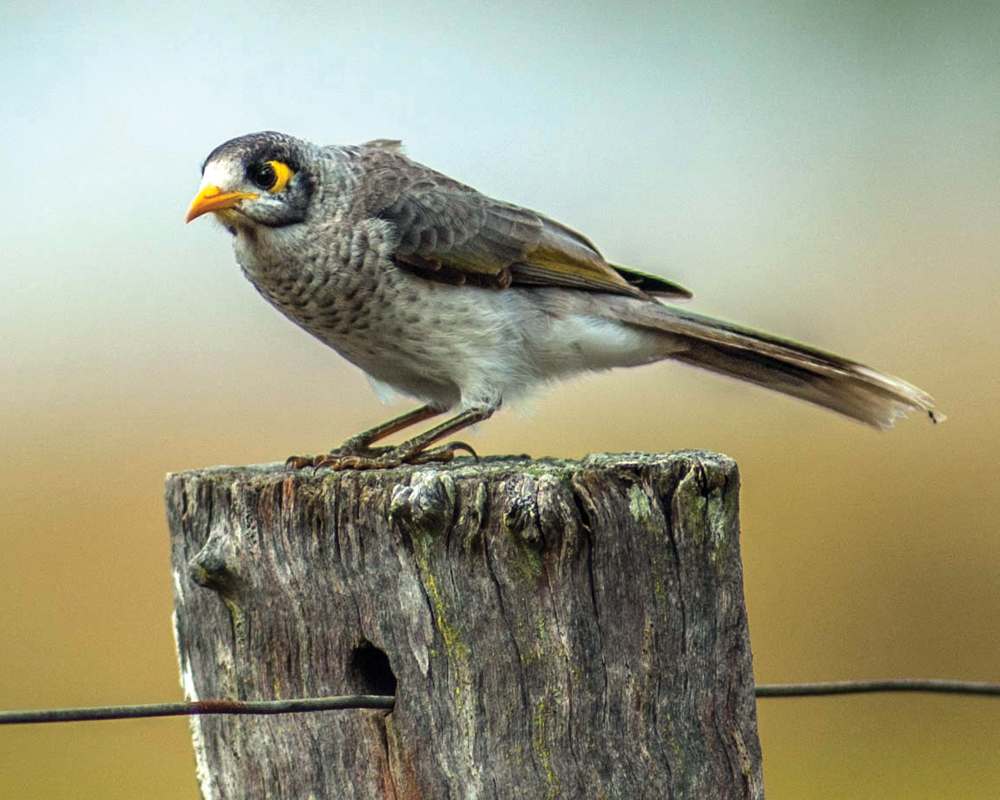
Noisy Miner. Land clearing for agriculture has suited this native honey eater, and numbers are now higher than prior to European arrival. They work in groups to drive other birds out of their territory. Photo: Pete Richman CC BY 2.0 Flickr
“The shrubby understory has also been lost from most remaining woodland areas due to things like grazing. This has created the perfect conditions for this aggressive native honeyeater,” said Mr Beggs, a PhD Candidate at the Fenner School of Environment and Society.
“Noisy miners work together to defend their territory and drive other birds out of their habitat.
“It is such a problem for many species of woodland birds already threatened by habitat loss, that noisy miner aggression is now listed as a Key Threatening Process under Australian environmental law.
“Culling may seem an obvious solution, but before investing precious conservation resources into this activity it is important to test if it will work.
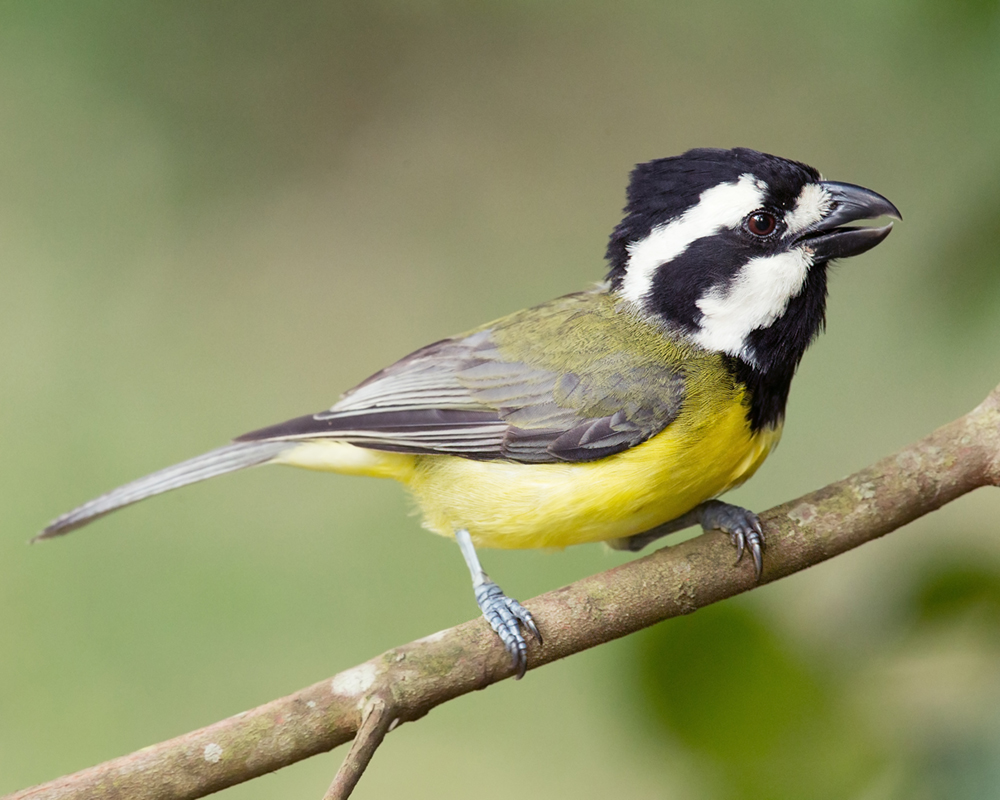
The crested shrike-tit is one of many woodland bird species that is aggressively driven away from open woodland habitat by groups of noisy miners. Photo: JJ Harrison CC BY SA 4.0 Wikimedia Commons
“We used a licensed shooter to cull all noisy miners in eight areas of woodland on farmland between Gundagai and Junee in New South Wales, that totalled 208 ha.
“We checked that the noisy miners were completely removed from the sites using a 45-minute playback of a variety of noisy miner calls until there was no response.
“We twice removed all noisy miners from all eight sites, but each cull created a ‘vacuum effect’. Noisy miners from surrounding areas simply moved into the area after the culling stopped.
“Monitoring took place before and for 12 months after culling. Before the culls we counted 510 noisy miners across the sites, and after the culls there were 512.
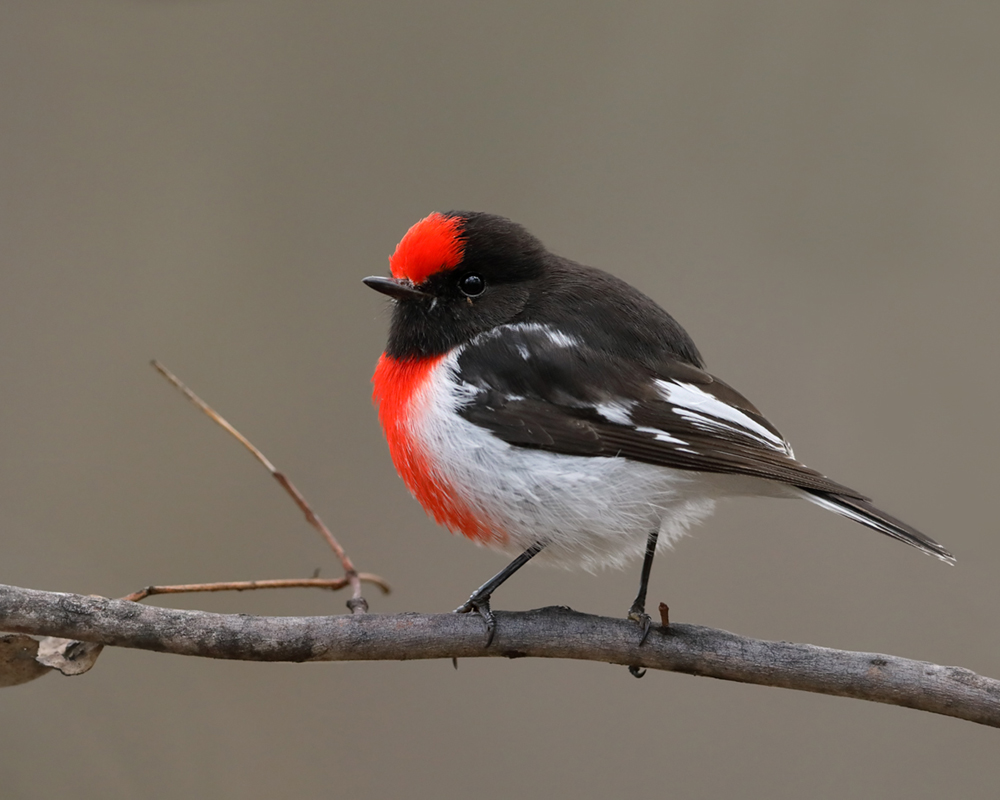
The red-capped robin is one of many woodland bird species that is aggressively driven away from open woodland habitat by groups of noisy miners. Photo: Patrick Kavanagh CC BY 2.0 Wikimedia Commons
“This is clear evidence that culling noisy miners doesn’t work in this particular landscape.
“The result was unexpected, as noisy miners are generally thought to have a small home range and do not travel very far.
To a community grappling with what to do about the noisy miner, research showing culling to be ineffective is important news. Attention must now move to other approaches to help threatened woodland birds to cope with the pressure of noisy miners.
“Restoring the understory vegetation that is important to so many bird species, calls for more investigation as a potential solution,” said Mr Beggs.
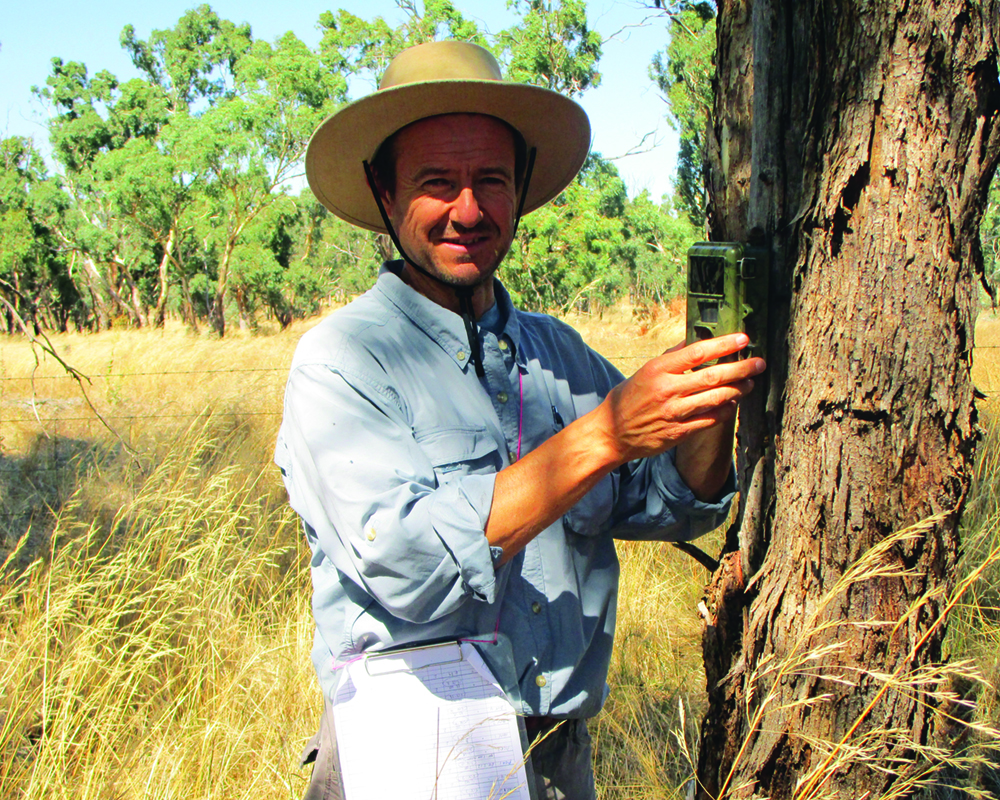
Researcher Richard Beggs installing monitoring cameras. Photo: Richard Beggs
The research has been published in Ecological Applications.




How Did Plants Conquer Land?
March 5, 2019: ANUAn international study has found a drought alarm system that first appeared in freshwater algae may have enabled plants to move from water to land more than 450 million years ago - a big evolutionary step that led to the emergence of land animals, including humans.
Professor Barry Pogson, from The Australian National University (ANU) and one of the study's senior researchers, said humans and other animals would not have evolved if there were no plants on land because they need oxygen to breathe.
"Land plants play that vital role of releasing oxygen into the atmosphere," said Professor Pogson from the ANU Research School of Biology.
Professor Pogson said the team had found the drought alarm system in all land plants they examined.
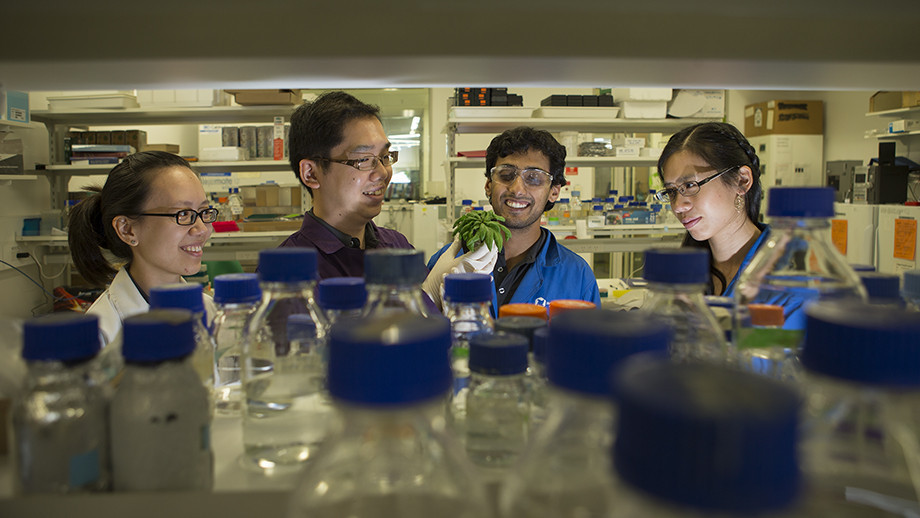
Members of Professor Barry Pogson's team at ANU, including Dr. Kai Xun Chan (second from left), in the lab. Image credit: Stuart Hay, ANU
"We first found this alarm system in a model laboratory plant a few years ago, but the significance of this most recent discovery is that we have been able to trace this system back to a time before plants were on land," he said.
The team's experiments on species of land plants and algae indicate this alarm system helps plant species protect against drought by triggering the closure of stomata, which are pores that release water vapor and take in carbon dioxide.
The other two senior researchers are Associate Professor Zhonghua Chen from Western Sydney University in Australia and Professor Doug Soltis from Florida Museum of Natural History in the US.
Associate Professor Chen said the alarm system, which he describes as a molecular signalling and protection system, was first assembled in the ancestor algae about 580 million years ago before being passed on to land plants.
"In plants, the same molecular signalling and protection system found in this algae appears to have played a really important role in helping plants endure drought and other harsh conditions as they colonised land," he said.
Professor Soltis said the system that evolved in algae was like building blocks which were used to help make land plants tolerant to drought.
"The same system in the algae did not protect against drought as the algae were in water - the system likely served another important purpose in the survival of those species," he said.
Professor Pogson and ANU colleagues, including co-lead author Dr Kai Xun Chan, are working on helping plants to survive longer in drought conditions, which could eventually benefit major food crops such as barley, rice and wheat.
"Intriguingly, this warning and protection system is activated by a part of the plant and algal cell called chloroplasts, which perform photosynthesis," said Dr Chan from the ANU Research School of Biology.
"This raises new questions on how photosynthesis and chloroplasts might have shaped the evolution of plants. We will capitalise on the widespread functionality of this warning and protection system in all land plants to try to find a way to engineer drought tolerant crops."
The research is published in Proceedings of the National Academy of Sciences of the United States of America (PNAS): www.pnas.org/cgi/doi/10.1073/pnas.1812092116

PITTWATER YHA OFFERS FREE BEDS FOR GREEN HEARTS
This May, Pittwater YHA opens its doors to green-hearted and green-thumbed guests who'll save the gorgeous Ku-ring-gai Chase National Park from imminent asparagus fern invasion. Yes, seriously.
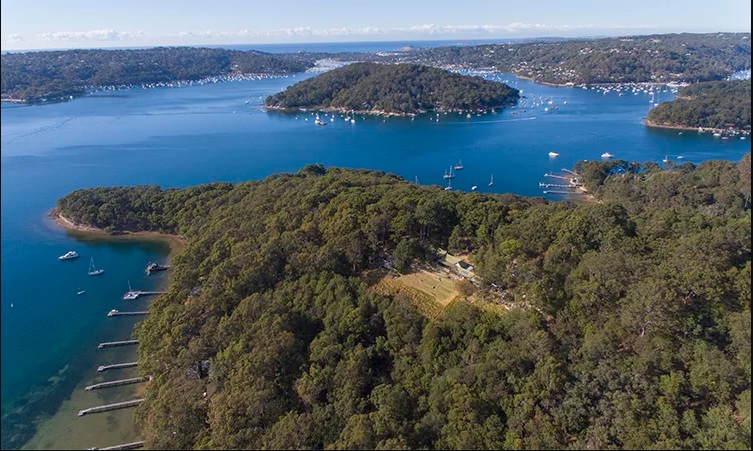
WHAT IS IT?Bush Regeneration sees eco-conscious, kind hearted humans restore and rehabilitate the gorgeous, sprawling Aussie bush from its weed-infested, degraded state into a healthy, thriving plant community, which will prosper and delight forevermore. Far from just weed removal; Regenerators focus on habitat, drainage, weed sources and establishing native communities. These are big words which probably don’t make much sense – but we have an interactive learning opportunity for you!
WHERE IS IT?Ku-ring-gai Chase National Park, Sydney’s protected north coast, is home to rock engravings, red ochre rock paintings, the fuzziest wildlife you ever did see and the most breathtaking views a Sydneysider or visitor could comprehend; and is currently under threat from invasive asparagus fern; which needs removing. Who knew your Aunty’s fave veggie could be so aggressive?
ALRIGHT - SIGN ME UP!The blissed-out, babbling-brooked, spectacular-viewed, fresh-aired oasis that is our Pittwater YHA, alongside the Northern Beaches Council, are offering you fine green-thumbed and hearted folk the opportunity to volunteer alongside professional Regenerators for a weekend of Pittwater Restoration from May 3 - 5, 2019. Spend two mornings of tending to the gorgeous surrounds and you’ll be rewarded with two nights’ accommodation, two days of meals (morning teas, BBQ lunches and evening dinners) and kayak use throughout your stay. Plus, you’ll be chuffed with yourself for doing your bit for the planet and our futures.
Along with your towels, two sheets, a pillowcase and, sturdy shoes, sunscreen and your breakfasts; you’ll need a $20 contribution for the weekend. For all the T&Cs; head to Pittwater YHA, shoot them an email (Subject: 'Bush Regeneration Weekend') or give them a ring on (02 9999-5748) – the only thing those guys love more than a regenerated bushland is chatting to ladies and gentleman who are keen on the idea!

Archie's Pittwater Clean Up
My name is Archie Mandin
I am a Seabin Ambassador, I started this campaign because I want to take a stand against ocean plastics!
My goal is to raise enough money to bring a minimum of 20 Seabins to Pittwater NSW as I want to give The Northern Beaches the opportunity to reduce its plastic pollution impact on the ocean. Its amazing how much accidental rubbish comes down our creeks and into our waterways
I need your help to raise money to buy the Seabins a revolutionary ocean cleaning technology which is essentially a floating rubbish bin that operates 24/7 catching all floating debris in the water.
The Seabin helps clean the ocean of floating debris which in turn creates cleaner oceans and we all benefit from this in one way or another. I mean, who really wants to swim in pollution? Not me that’s for sure!
Did you know that 300 million tons of plastic are produced in the world every year, half of which is for single use products, from this more than 8 million tons of plastic is dumped into our oceans every year. We need to do something about it and now with the purchase of a Seabin we can all participate and make a difference!
Join me and my campaign to help ensure cleaner oceans!
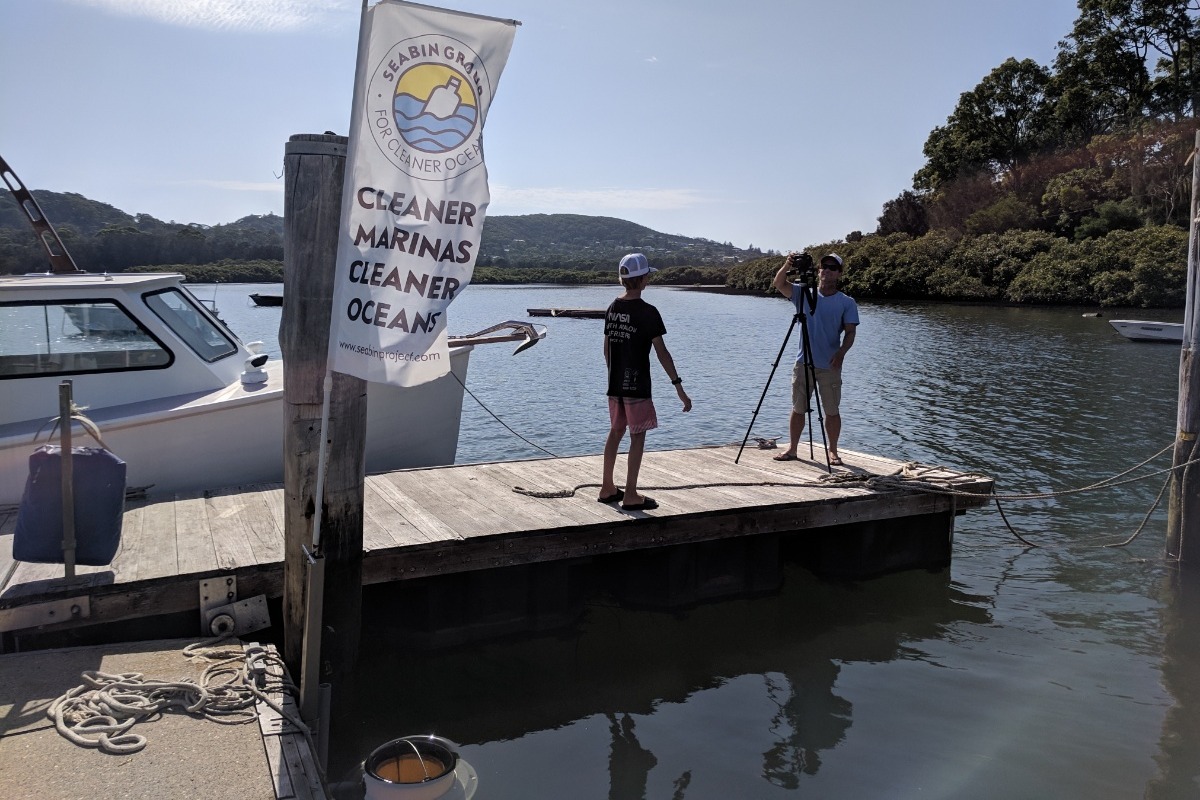
What’s a Seabin? The Seabin is a floating rubbish bin that is located in the water at marinas, docks, yacht clubs and commercial ports.
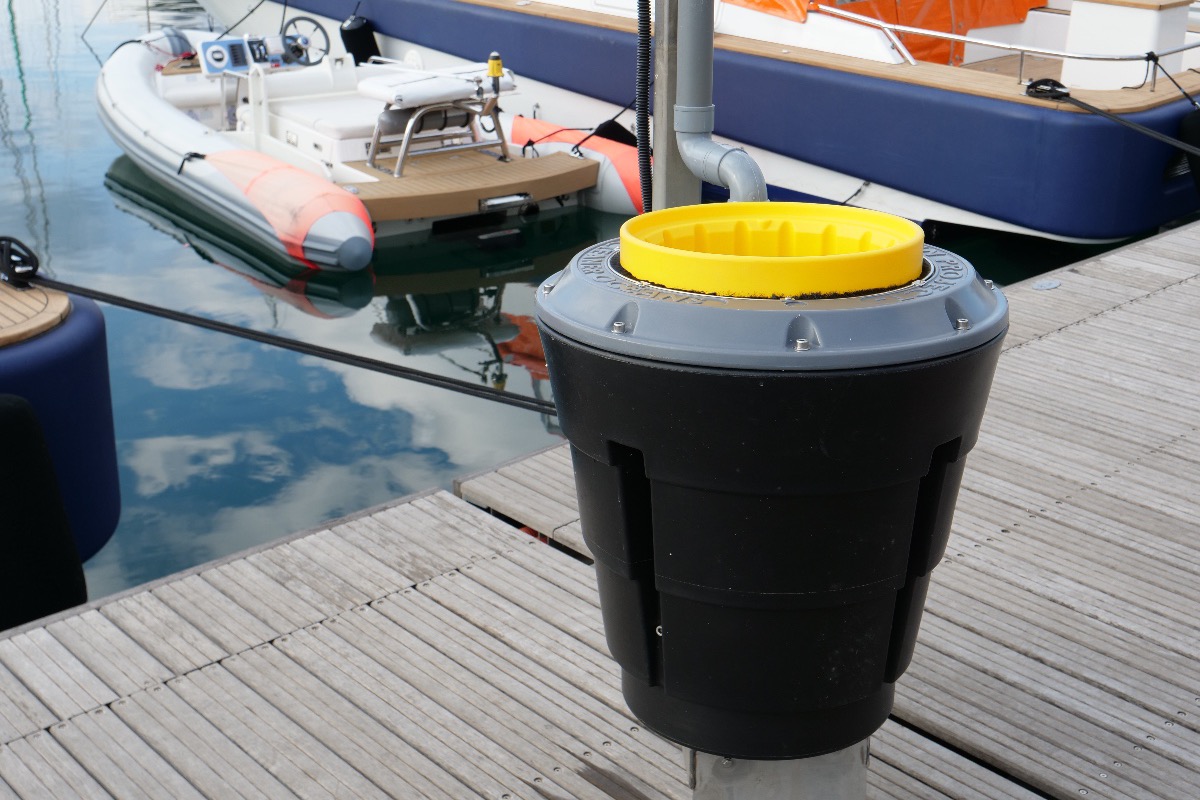
The Seabin can catch an average of 3.9kgs of floating debris per day which adds up to 1.4 tons per year. (depending on weather conditions and debris volumes) The Seabins is catching large plastic bags, bottles, plastic straws, coffee cups, food wrappers, surface oils and micro plastics down to 2 mm small.
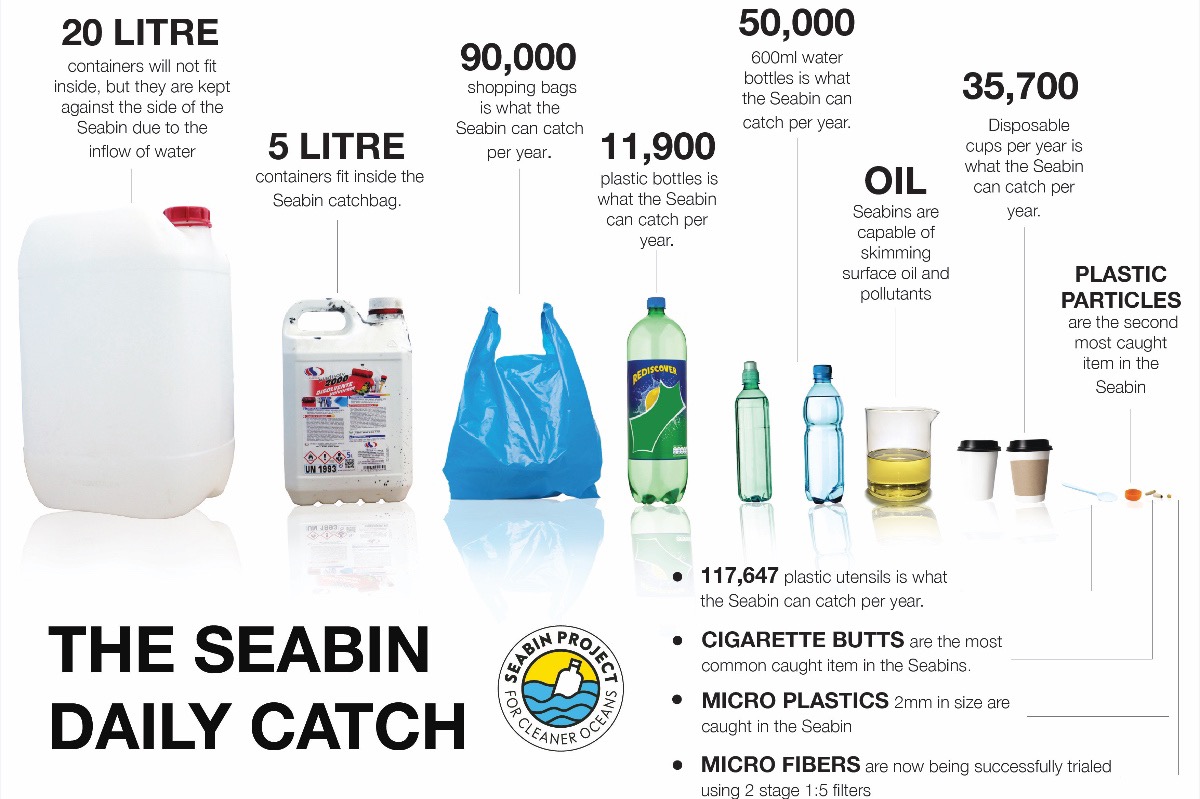
How can a Seabin contribute to cleaner oceans?The Seabin contributes to cleaner oceans by removing 1.4 tons of floating debris per unit per year. The location of the Seabin in marinas is ideal and where it matters most, close to the source of entry for floating debris. Ports and Marinas are perfect locations to stop floating debris from entering the open ocean and ocean plastics are also brought in by wind and currents.
Are the Seabins a danger to marine life?The fish According to the team at Seabin, stay away from the surface of the water where the Seabin sucks in the water. They are deterred by the force of the water current. If there are swarms of jellyfish or bait fish it is recommended that the Seabins are turned off until the swarms pass. If a fish was to accidentally go into the Seabin, it would be caught in the Seabin and stay submerged in water until the marina staff retrieve the filter and throw the fish still alive back into the water.
How does it work? Water is sucked in from the surface and passes through a catch bag inside the Seabin, with a submersible water pump capable of displacing 25.000 LPH (liters per hour). The water is then pumped back into the marina leaving litter and debris trapped in the catch bag to be disposed of properly.
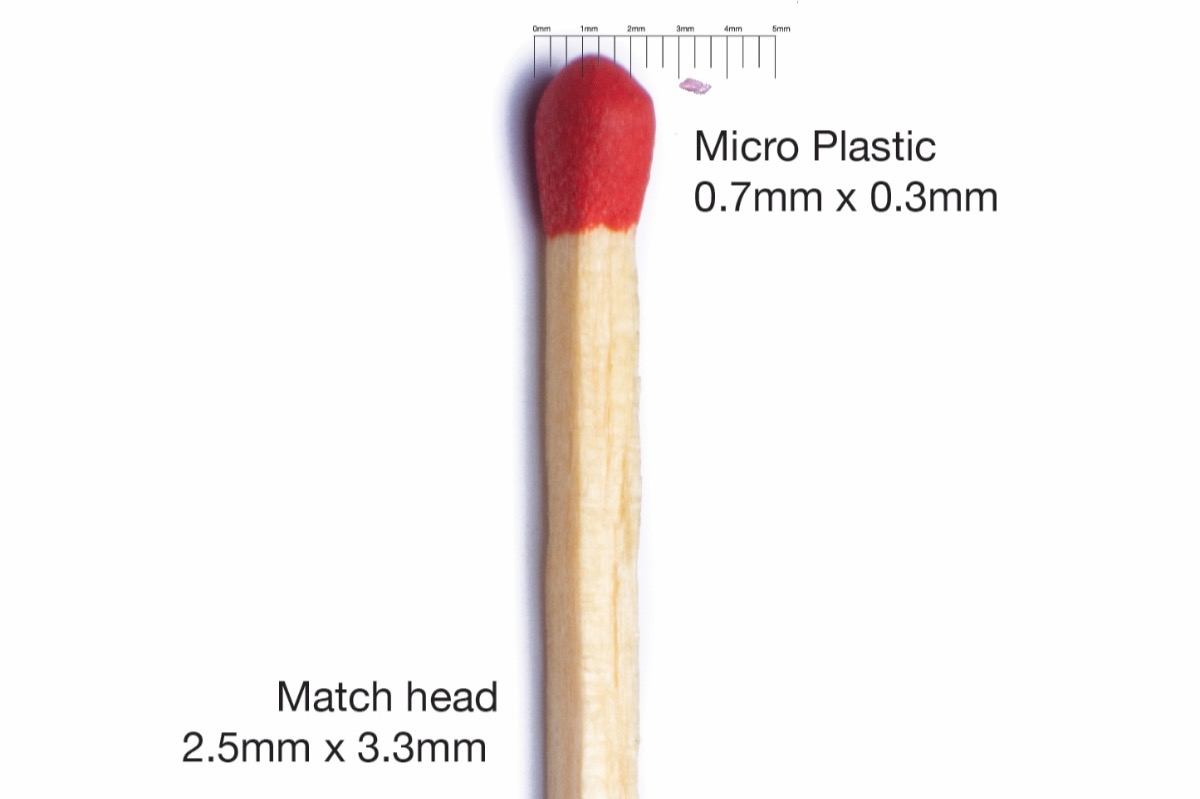
Who is responsible for the Seabin?This is the best part of it all, the marina will be the one responsible for the upkeep of the Seabins and also they will be paying for the energy consumption of the Seabin which is around $2 - $3 a day.
The marina enjoys a cleaner marina and the rest of us and the marine life enjoy cleaner oceans with less floating debris polluting our oceans!
Seabins part of a whole solutionSeabins whole solution is Technology, Education, Science, Research and Community. The reason for this is that Technology alone is not the solution to stopping ocean plastics, education is the real solution.

Great! Can our local community be involved also?Yes! The team at Seabin have interactive programs and lessons designed for schools, community and youth to interact with the Seabins and have over 2000 school students engaged around the world, this is something that we can do locally also with support from the team at Seabin Project.
What will we be doing if we participate in these programs?You would be joining an international community contributing important data and feedback on ocean plastics to the Seabin central data base. Renowned scientists, universities and environmental agencies are all a part of the programs also.
The lessons range from identifying ocean plastics to data collection of what the Seabins are catching weekly. The data collection is a very easy activity and where we can all see the measurable impact of debris the Seabins are taking out of the water in all weather conditions.
It’s as simple as counting how many plastic bags, plastic particles, food wrappers and then noting it down on a spreadsheet or app. Weather conditions and location information is also entered into the data base.
How can you help our campaign and make a difference in the world?Every contribution to this crowdfunding campaign helps, be it $1 or $50 dollars, it all adds up and bring us closer to our goal.
Even if you cannot afford a donation, please help by sharing this campaign with your friends and family on social media. The more people that know about the campaign the better!
Thanks everyone for taking the time to check out our campaign!
FOR CLEANER OCEANS!
Archie
FAQS SHEET
Seabin Project FAQs
Q: Can someone pay out the crowdfunding campaign goal?A: Yes! We need help! The more money we can raise, the more Seabins we can buy.
Q: Why crowdfund a Seabin?A: Until now, the Seabins were not for the everyday person to purchase because marinas ports and yacht clubs are the target market for Seabin Group. This is a way where everyday people can give something back to the oceans.
Q: How do Seabins work in tidal areas?A: Seabins at present are designed for floating docks and pontoons. The Seabins move up and down with the tide on the floating dock.
Q. How are the pumps run? A. The pumps are currently electric, and around $2-$3 a day to run.
Q: When are the Seabins available?A: Depending on your countries location, Seabins will be available Feb 2019.
Q: Do any fish get sucked into the Seabins? What about smaller marine life?A: There is a possibility of fish to enter the Seabins, however in the last 2 years of development, the Seabins have only caught a handful of small bait fish. Most of which have been thrown back into the water alive. The fish simply stay away from the flow of water entering the Seabin and with the current fine tuning of the Seabin, the risk is now minimal.
Q: I don’t have any money to donate, how can I help?A: Don’t worry! Your amazing anyways and thanks for even contacting us. We need help to share this project around with any media we can. Social media platforms like Facebook, Instagram, Twitter, websites, bloggers. Also with newspapers, magazines, tv, radio and journalists. Also friends and family!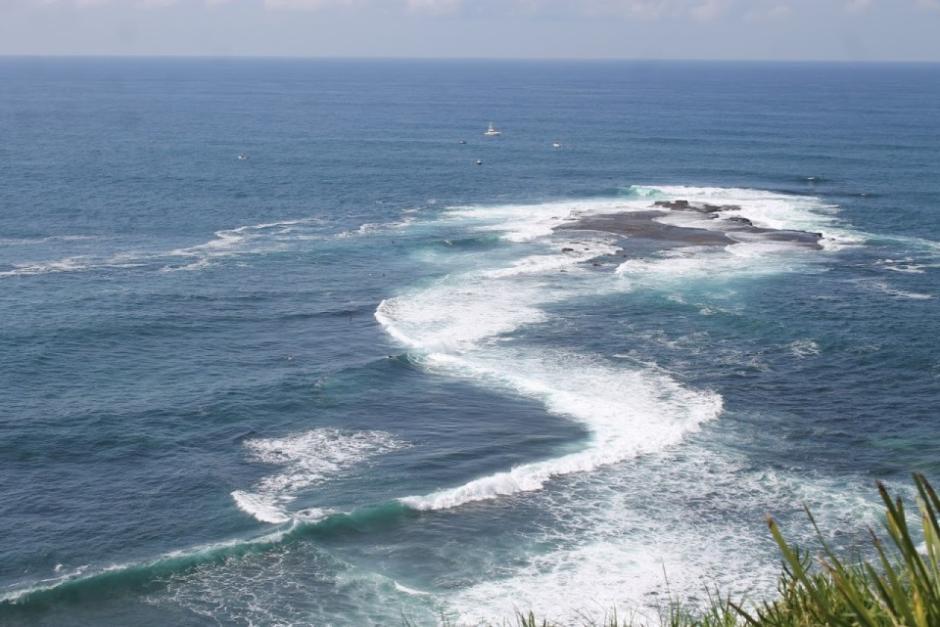
 Crosswaves - Newport Reef
Crosswaves - Newport Reef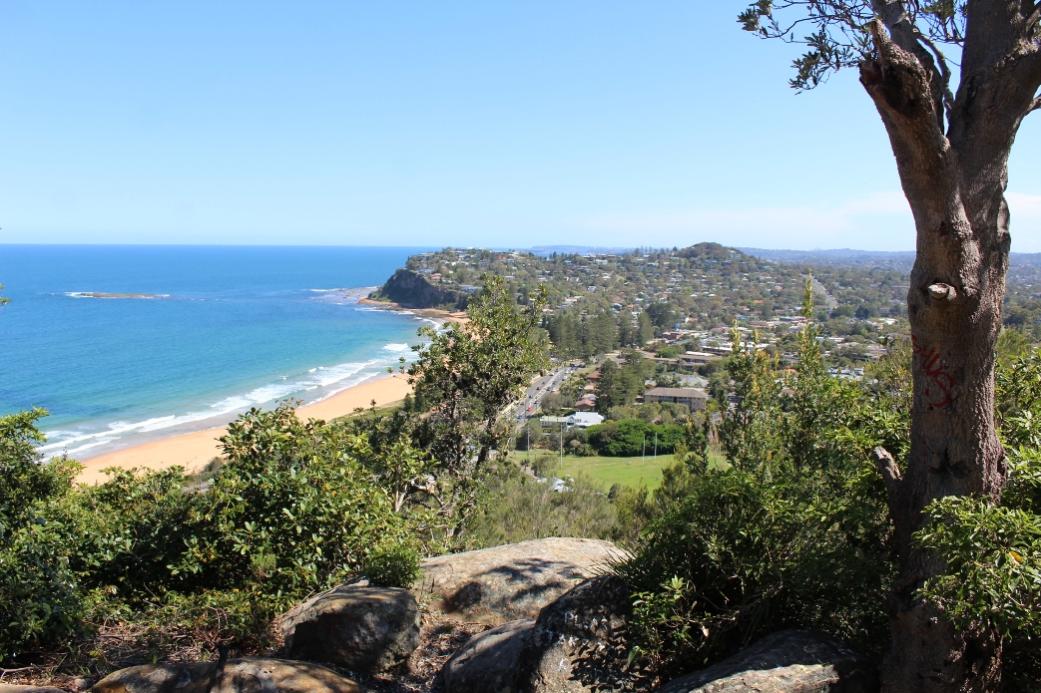





FAQS SHEET
Seabin Project FAQs



HIV Remission Achieved In Second Patient
Self-Sterilising Microneedles Revolution In Vaccination And Drug Delivery
Chemical Pollutants In The Home Degrade Fertility In Both Men And Dogs
Australian Dingo Is A Unique Australian Species In Its Own Right
Our Brains Reveal Our Choices Before We’re Even Aware Of Them: Study
Scientists Levitate Particles With Sound To Find Out How They Cluster Together
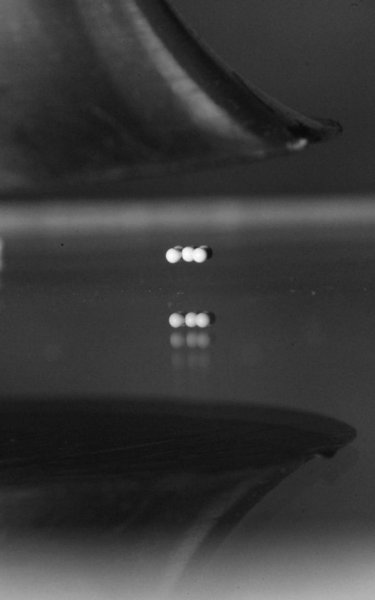
Deakin Economist: Raising Retirement Age Could Harm Worker Health
National Seniors Welcomes Specialist Fees Website
Record $967 Million Commitment To Expand Residential Aged Care
- More than $4.7 million to be invested in Shepparton, Victoria, to build a 20-bed residential aged care facility exclusively for disadvantaged older Australians who are homeless or at risk of homelessness.
- More than $5.9 million to extend and upgrade two facilities in Queensland to better support Aboriginal and Torres Strait Islander seniors in need of dedicated, culturally appropriate aged care.
Exercise Can Improve Non-Motor Symptoms Of Parkinson's Disease
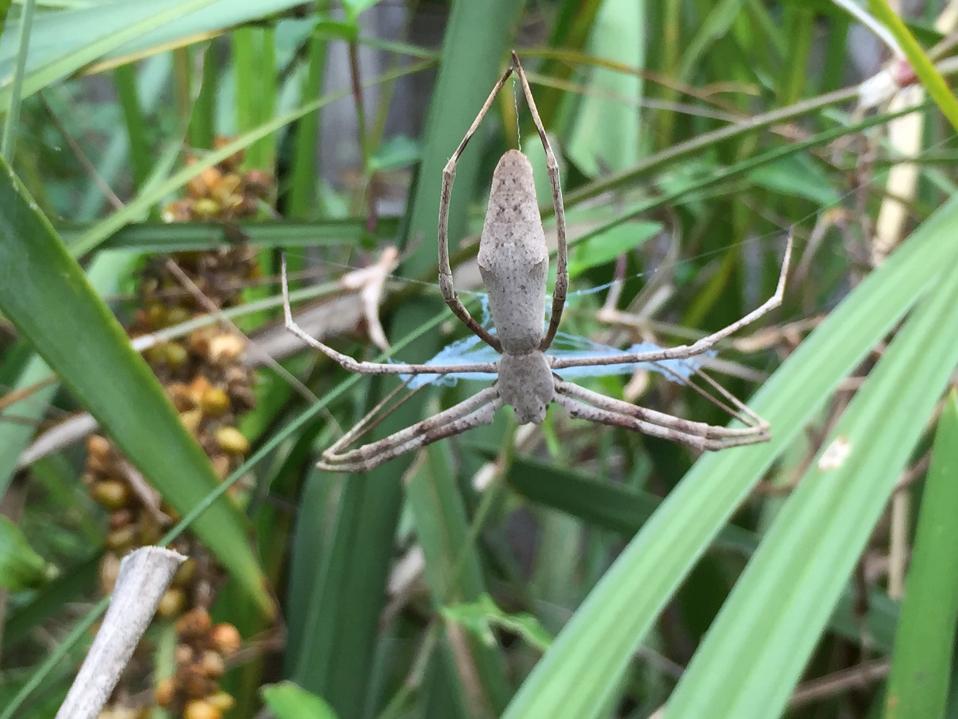
A Netcasting Spider, seen from the back.
This spider's hunting method is to wait patiently with a rectangular web held between its first two pairs of legs. It has excellent vision. When prey comes near, it is captured in the web as the spider leaps. This one in North Avalon is in a Lomandra plant. They like to lurk plants with strappy leaves, including Cymbidium orchids. Colour can vary, be grey or rufous. Spiders are always ready to escape, so net building spiders wait head down, able to drop to safety with a thread from the spinnerets in the abdomen.
Photo by and courtesy Pittwater Natural Heritage Association (PNHA)
Beach-Goers Urged To Be Wary Of Marine Algal Bloom
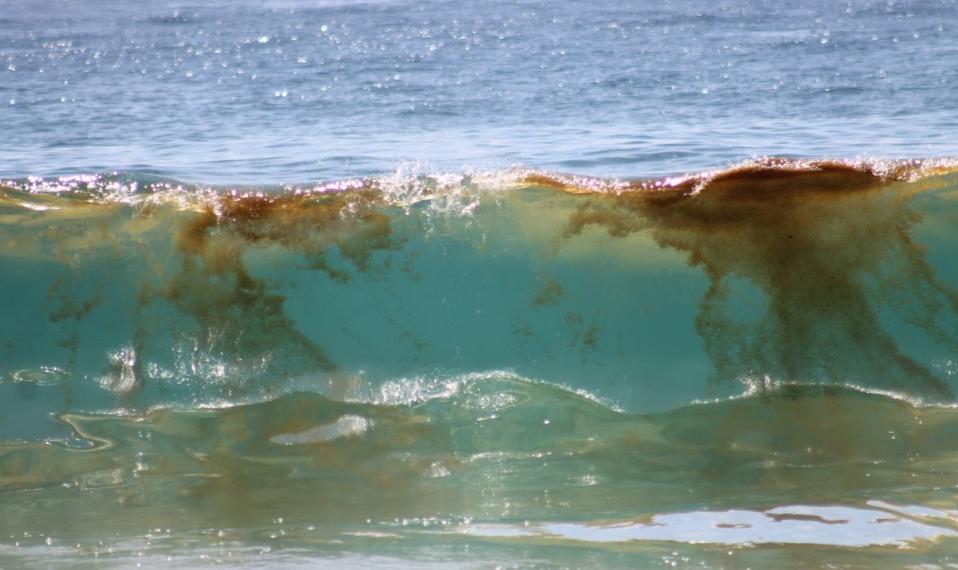
Margaret Atwood Woos Students With Tales Of Creativity And The Gift Of The Writer
“People trade stuff all the time, that’s how human beings go about their daily lives, and in The Gift you will read why,” Atwood said.“If you're having trouble with your family, you shouldn't go home for Christmas – gifts are exchanged.“And the difference between gifts and the things you buy is that if you receive a gift, you owe, either to the person that you received from or to somebody else.“And with writing, usually you receive the gift from previous writers, you incorporate it and then you pass it on.”
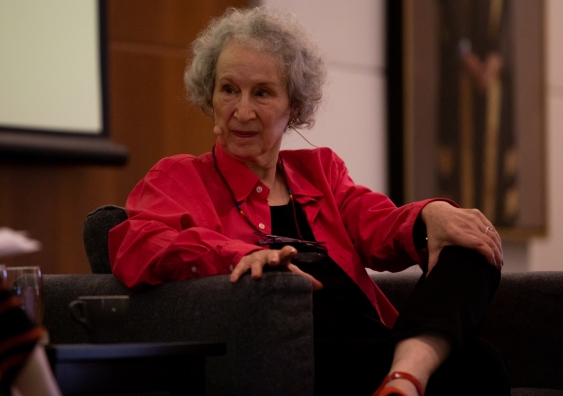
A Zest For Nests – Willie Wagtail Pair Builds Four
Royal Australian Mint Celebrates 60 Years Of Iconic Aussie TV Show Mr Squiggle

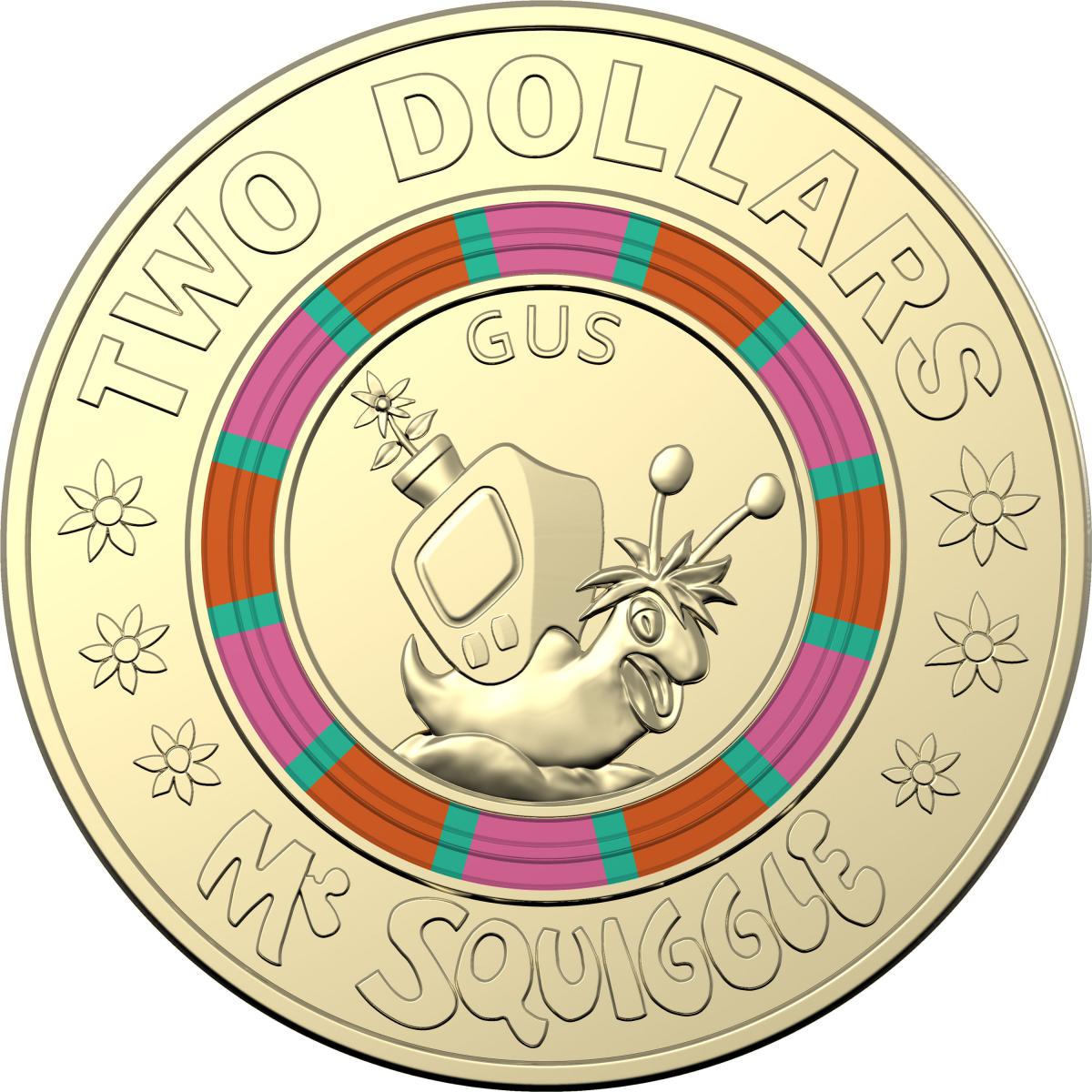


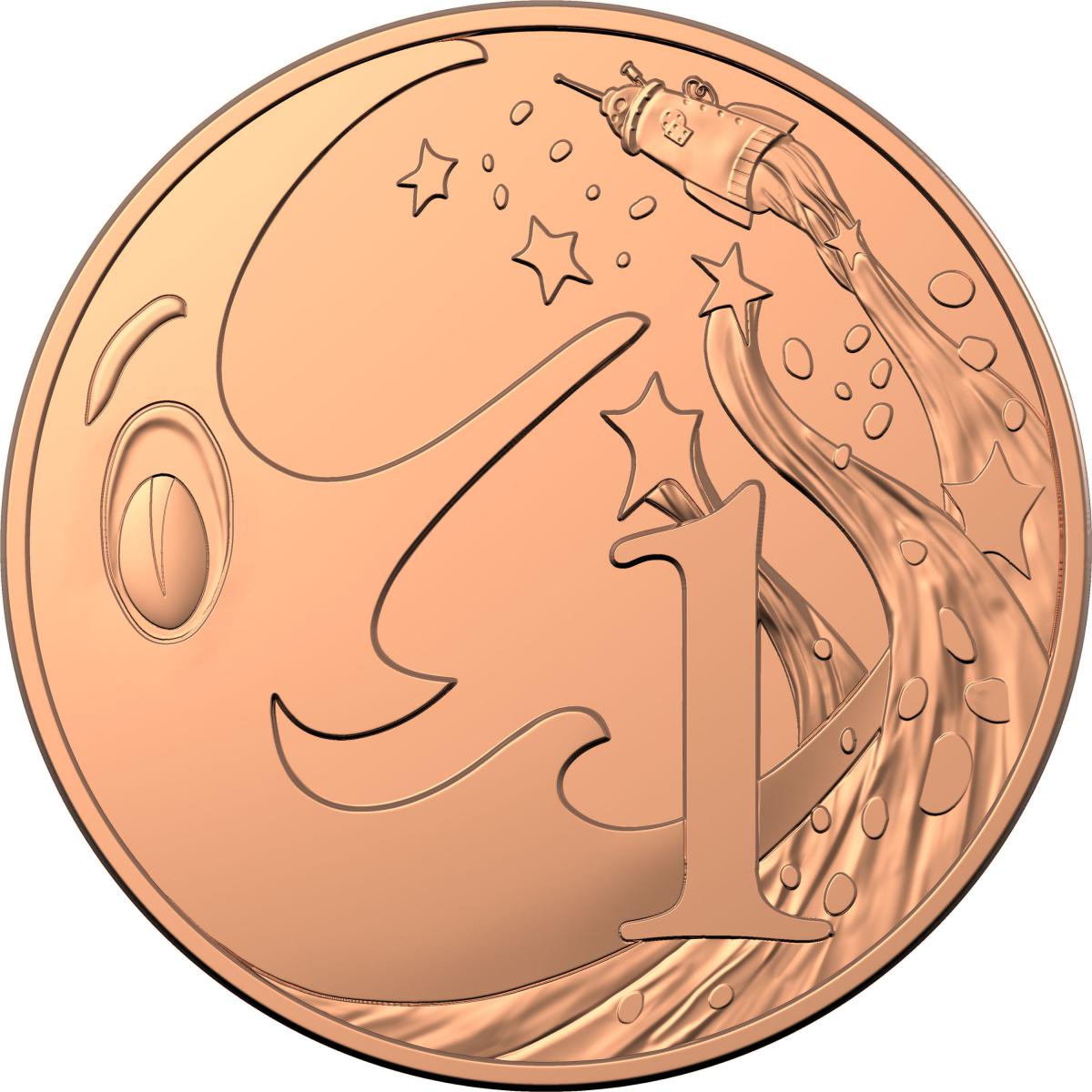
‘Mr Squiggle The Man From The Moon’ Exhibition Opens At The Royal Australian Mint
Disclaimer: These articles are not intended to provide medical advice, diagnosis or treatment. Views expressed here do not necessarily reflect those of Pittwater Online News or its staff.